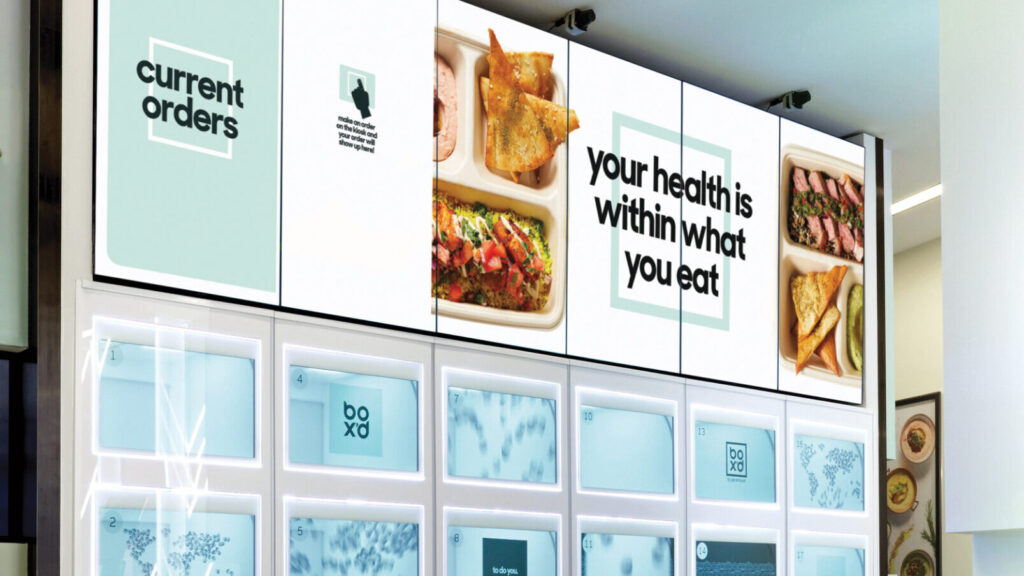Finding Hope in Ingredient Alternatives, Food Lockers, Benefits & Beetlejuice

NIKO PAJKOVIC, SENIOR EDITOR AND RESEARCH WRITER | TREND HUNTER
MISHAL OMAR, MANAGING INSIGHTS EDITOR | TREND HUNTER
The pandemic severely affected Canada’s restaurant community. Now, instead of a reprieve, the industry finds itself amidst a second act, battling rapid inflation and the spectre of a looming recession. As Canadians brace for economic challenges in the coming months, many are already cutting out “non-essential” expenses, and the cost of food has replaced the weather as the primary topic of conversation at the water cooler, the dog park and the dinner table. Operators who survived the pandemic now face a new challenge: how to maintain or build on their success as they experience staffing issues, rising costs and declining clientele.
The team of bright minds at Trend Hunter have identified three key ways that can help foodservice businesses maintain their relevance in a constantly changing economic and social landscape–cutting operational costs through automation, prioritizing employee well-being, and attracting customers through experiences and social impact.
According to Food Service Facts 2022, 74% of quick-service restaurant operators expect to increase their use of automation technology in the next two years, primarily to help overcome existing labour shortages.

CUTTING COSTS
Consumers are now spending significantly more on food, and Statistics Canada projects that food prices will only continue to rise over the next several months. Inflation has hit both consumers and businesses, particularly independent or small restaurants and food retailers. As food cost increases inevitably impact those in the industry, businesses are having to choose between cutting operational costs (potential loss of staff) and raising prices (potential loss of customers). While the industry struggles with these intensifying challenges, some businesses are taking this opportunity to see where they can cut operating costs in a way that enhances the customer experience rather than diminishing it.
Harsh economic pressures have triggered widespread innovation amongst restaurant operators who have begun introducing a range of novel cost-cutting strategies. Thinking pragmatically, some restaurant owners have opted to make cuts at the product or procurement level. Expensive cuts of meat and pricey foreign ingredients are being swapped for cheaper and more readily-available food options, such as eggs and shrimp. Critical to this strategy, however, is that owners are finding ways to turn these affordable alternatives into unique and exciting dishes, which allow them to justify near-identical pricing.
Elsewhere, quick-serve chains are saving money by optimizing their operations via cutting-edge technologies. According to Food Service Facts 2022, 74% of quick-service restaurant operators expect to increase their use of automation technology in the next two years, primarily to help overcome existing labour shortages.
A notable example of this comes from the adoption of smart food lockers, which are being used to optimize takeout and pickup processes. Currently, most versions of this locker-like technology adhere to the same general concept: customers order and pay for their food through an app or web browser, which is received by restaurant staff who then place the completed order in a two-way, temperature-controlled locker where it is made available for customer pickup.
In 2020, Paramount Fine Foods, a leading Lebanese food chain based out of Toronto, Ontario, introduced its own food locker technology called ‘Box’d’, which was developed in partnership with point-of-sale software company Givex. Similar to other food lockers, Box’d was designed to separate chefs from customers via the use of “food cubbies” that could be unlocked via customer smartphone. A major success in Toronto and a prime example of the potential of food locker technology, Box’d showcases how technology can be used to cut operational costs while improving customer experiences.
EMPLOYEE RETENTION
The pandemic, combined with growing staff dissatisfaction with unsafe work environments, reduced work hours and wages that don’t meet the cost of living, has resulted in a phenomenon known as “The Great Resignation”. The Canadian restaurant industry has been significantly impacted by a significant number of staff departures, with Canadian QSR and full-service restaurants in particular reporting labour shortages. Younger demographics that typically fill the bulk of service positions as they pay their way through school now expect more from potential employees, and some employers have started to address this issue by prioritizing employee benefits, wages and/or general wellbeing.
As we approach the end of 2022, restaurants in Canada are back up and running in full force; however, they are faced with a new, adjacent problem: high employee turnover rates. Confronted with increased food prices and labour shortages, restaurant operators are struggling to provide employees with satisfactory wages. Keeping talented staff has become a pressing problem for business owners within this space.
Restaurant operators have once again been forced to innovate in response—this time by experimenting with new retention tactics on top of wage increases. A notably progressive example of this comes from restaurants now offering full-fledged healthcare packages, which not only support workers’ needs financially but ethically.

For instance, Concorde Entertainment Group, a Calgary-based entertainment and dining company, has introduced extensive health and dental benefits for its full-time employees. The company, which has a portfolio of 21 establishments and employs over 1,200 staff, will be offering these benefits to every employee that works 32 or more hours a week. So far, that includes approximately 400 Concorde staff. In addition, the benefits will be provided alongside a family assistance program that will be offered to all company employees.
CUSTOMER ATTRACTION
Due to food price increases and higher costs of living in general, Canadians are anticipating going to restaurants less frequently in the coming months. As restaurants risk losing sales, operators can find opportunity by prioritizing experiences geared toward Millennials and Gen Z. Today’s younger consumer prioritizes experience and social impact in the businesses they choose to patronize, and they are often willing to pay more for products and services that are sustainable. These demographic-led priorities offer opportunities for restaurants to pivot and engage with customers in more innovative ways.
To address the issue of declining customers, many restaurant owners are ensuring that the value of their customers’ money extends well beyond the food they are served. And they are doing so by bolstering the overall dining experience offered at their restaurants.
Two standout strategies for adding holistic value to the commercial dining experience come from restaurants that focus on elevated culinary offerings and from those that have aligned their brand with a higher purpose. These tactics are particularly noteworthy because they appeal to Millennial and Gen Z consumers – two priority demographics that will be the most difficult to attract, though potentially the most rewarding, as we near recession.

Since Millennials and Gen Zs have less disposable income than other generations and because many of them consider themselves to be “conscious consumers”, when they visit a restaurant, they want their spend to matter. Providing them access to novel experiences or broadening an experience to align with a progressive cause, like nose-to-tail dining, can help operators meet the moment and connect with these demographics. For those unfamiliar, nose-to-tail dining is the traditional method of cooking and eating all parts of an animal, including those that would otherwise go to waste, such as its organs, muscles and bone marrow. Aside from this re-emerging movement’s food waste-reducing potential, it is also typically tied to ethical farming practices and offered by boutique restaurants that focus on food sustainability. In addition, it tends to be geared towards foodies and positioned as a unique culinary event with exciting experiential elements.

Antler Kitchen & Bar in Toronto is a one-of-a-kind, small chef-led restaurant that specializes in dishes made using ethically and sustainably-reared animals, including nose-to-tail charcuterie platters. In addition, the restaurant abides by a “locally sourced and grown” commitment and exclusively uses regional ingredients. Items on its menu include nose-to-tail charcuterie, deer ragout and unique cocktails like “Beetlejuice”, which is made using locally “foraged ingredients.”
In the coming months, the restaurant industry is in for a challenge, yet there are efforts and ideas that can help set forward-thinking businesses up for long-term impact. The seemingly insurmountable challenges triggered by the pandemic made businesses in the industry more adaptable, and the cultural changes that have taken place since are presenting exciting opportunities for businesses that are able to pivot once again.









